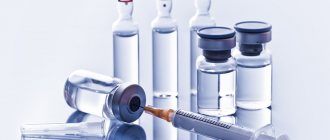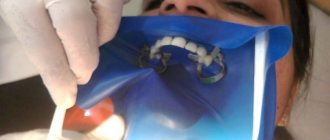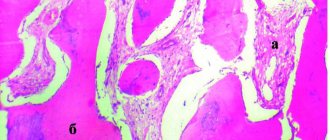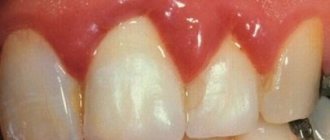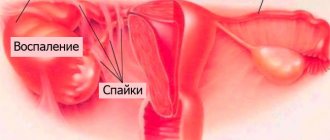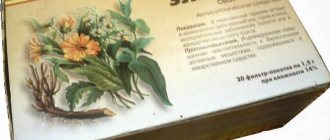From this article you will learn:
- what antibiotics are used for inflammation of the gums, tooth roots, gumboil,
- choice of antibiotic and dosage regimen,
- is it possible to give injections in the gums,
- causes of diarrhea after taking antibiotics.
The article was written by a dental surgeon with more than 19 years of experience.
Antibiotics are medicines that have antimicrobial properties and inhibit the growth and reproduction of pathogenic microorganisms. In dentistry, antibiotics are most often prescribed either for inflammation of the gums or for apical periodontitis (i.e., in the treatment of purulent inflammation at the apex of the tooth root). In each of these cases, inflammation is caused by different types of pathogenic bacteria and/or microbial associations, which requires the correct choice of drug before starting antibacterial therapy in the oral cavity.
In most cases, antibiotics in dentistry are prescribed “empirically”, i.e. without preliminary microbiological examination. Therefore, the dentist must be familiar with the likely composition of the microflora in the source of inflammation in various dental diseases (periodontitis, periodontitis, gumboil on the face), and also be aware of current data on the resistance of pathogenic bacteria to various types of antibiotics. Therefore, part 1 of our article will be devoted to what antibiotics are needed for gum gum disease and the development of purulent inflammation at the root of the tooth, and the second part will be devoted to how to choose the optimal antibiotic for gum inflammation (i.e., chronic generalized periodontitis).
Important: the treatment regimens described below are for informational purposes only, because An attempt to relieve inflammation without going to the dentist always leads to only a temporary improvement, but a more aggressive course of inflammation in the future. Therefore, we recommend taking antibiotics only as prescribed by a doctor!
Antibiotics for gumboil and inflammation of tooth roots -
Let's look at what antibiotics can be used for adults for gum gum disease. The choice here is quite large, for example, ranging from inexpensive antibiotics - such as lincomycin or amoxicillin, to more expensive drugs (for example, β-lactam antibiotics, 2nd generation fluoroquinolones and macrolides). Below we will look at the most popular antibiotics and tell you whether they work well for this type of dental inflammation.
1) Amoxiclav (or Augmentin) - these drugs contain a combination of “the antibiotic amoxicillin and clavulanic acid.” Many modern pathogenic bacteria produce β-lactamase enzymes that destroy amoxicillin. Clavulanic acid protects amoxicillin from the action of beta-lactamases, which greatly increases the effectiveness of the antibiotic. But using the most common amoxicillin (without combination with clavulanic acid) in dentistry today is already pointless.
The dosage regimen for adults is 500 mg 2-3 times a day (2 or 3 times depending on the severity of inflammation), the duration of administration is usually 5 days, but if necessary, the doctor can extend the drug for another 2-3 days. A package of the antibiotic Amoxiclav (15 tablets of 500 mg) costs from 330 rubles, and a package of the antibiotic Augmentin (14 tablets of 500 mg) costs from 180 rubles. And we do not recommend purchasing their Russian analogues containing a combination of “amoxicillin and clavulanic acid,” especially since they will not be cheaper.
Important: if you decide to purchase inexpensive amoxicillin (without clavulanic acid), then it should be used at least in combination with the antibiotic metronidazole (Trichopol). The latter is taken for purulent infections according to the same regimen - 500 mg 3 times a day (5-7 days in total). Only in this case can we expect at least some acceptable effectiveness from the treatment.
2) Ciprofloxacin (Tsiprolet) - this inexpensive, popular antibiotic belongs to the 2nd generation fluoroquinolones. The recommended regimen for use in adults is 500 mg 2 times a day (for 5 days), and the cost of a package of the Indian-made drug will be about 120 rubles. It works well for apical periodontitis, i.e. inflammation at the apex of the tooth root. In addition, the risk of developing diarrhea with this drug is lower - compared to β-lactam antibiotics (Amoxiclav, Augmentin).
Antibiotic Tsiprolet (10 tablets, 500 mg each) –
However, if we are talking about long-term apical periodontitis (especially if there have been cases of a fistula with purulent discharge in the projection of the tooth root), if there is acute pain indicating the formation of a purulent abscess at the apex of the tooth root, it would be optimal to prescribe an antibiotic containing the combination “ciprofloxacin” + tinidazole." These are drugs - “Ciprolet-A” or “Tsifran-ST”, in which, in addition to 500 mg of ciprofloxacin, each tablet also contains 600 mg of tinidazole. Their cost is from 210 and 320 rubles, respectively, but 1 package of each drug will be enough for you for a full 5 days of antibiotic therapy.
Tinidazole is an antibacterial drug with antiprotozoal activity, i.e. it is effective against anaerobic microorganisms (which are especially numerous during the formation of pus at the site of inflammation). In addition, tinidazole is very effective against Clostridium difficile and Clostridium perfringens, which are responsible for the development of diarrhea while taking antibiotics, and thus, when taking combination antibiotics with tinidazole, diarrhea is practically excluded.
3) Azithromycin (Azitral) - it is usually prescribed for allergies to β-lactam antibiotics (for example, amoxicillin). There are different regimens of use, but according to studies for purulent odontogenic infections, the optimal treatment regimen is to take a single dose of 1000 mg for 1 day, after which the drug is taken for another 2 or 3 days at a dose of 500 mg once a day. But the price of this antibiotic will be high if we do not take into account Russian manufacturers.
For example, a good Indian drug with azithromycin “Azitral” will cost you 220 rubles per package of 3 capsules of 500 mg (it turns out that you will need to purchase 2 packages for the course). The short course of use is due to the fact that this antibiotic has a cumulative effect, and therefore, even after taking it, therapeutic concentrations of the antibiotic remain in the body for several days.
Is it worth using Azithromycin for complications of caries (apical periodontitis, swelling or fistula on the gum, or gumboil on the face) - it’s definitely not worth it. This is due to the fact that in patients with inflammation at the apex of the tooth, drugs with azithromycin show good effectiveness only in 50% of cases, and in the remaining half of patients, the sensitivity of the microflora in the inflammation site to azithromycin is regarded as “low”. Below we will also demonstrate scientific works that confirm this.
4) Lincomycin or Clindamycin are quite old antibiotics belonging to the lincosamide group. Moreover, clindamycin is a more effective analogue of lincomycin (in terms of effectiveness against certain types of pathogenic bacteria that cause purulent inflammation, it is 2-10 times more effective than lincomycin). The peculiarity of these antibiotics is a certain affinity for bone tissue, which is an advantage for purulent inflammation in the teeth, as well as their low price. The disadvantages include a narrow spectrum of antimicrobial action, as well as the fact that they often cause diarrhea.
The regimen for taking Lincomycin is 2 capsules 3 times a day, for a total of 5 days (a package of the drug costs only 60 rubles). Clindamycin dosage regimen: 1 capsule 150 mg 4 times a day for 4 days. The latter is the drug of choice for allergies to β-lactam antibiotics, which include penicillins, amoxicillin, cephalosporins, etc. Affordable price – pack of 16 tablets. 150 mg each (made in Serbia) costs approximately 160 rubles. To prevent diarrhea while taking antibiotics, they should also be combined with tablets. Metronidazole.
Is it worth using Lincomycin - modern studies show that lincomycin shows good effectiveness only in 36.8% of cases (in at least 63.2% of cases - pathogenic bacteria in the inflammation site have only weak sensitivity to lincomycin). Moreover, if we are talking about a long-existing focus of inflammation in the area of the tooth root (in the presence of a fistula or purulent abscess), lincomycin is effective only in 19% of cases, at the same time in 47.6% of cases it demonstrates only weak effectiveness, and in the remaining 33 .4% of cases – patients have complete resistance of the microflora in the inflammation site to lincomycin.
It is also worth considering that lincomycin has very low bioavailability (when taken on an empty stomach, only about 30% of the drug is absorbed through the intestines). Simultaneous food intake reduces bioavailability by 4-5 times, i.e. bioavailability will be only about 5%. Taking on an empty stomach and poor bioavailability make the drug excessively harmful to the normal microflora of the stomach. In addition, taking Lincomycin can often cause antibiotic-dependent diarrhea.
SUMMARY (which antibiotic is better for inflammation at the root of the tooth) –
To compare the effectiveness of antibiotics in this article, the author of the article used personal experience in prescribing them, as well as the scientific work “Sensitivity of microbial associations of exudate of a periodontal pocket and odontogenic lesion to antibacterial drugs” (Makeeva I.M., Daurova F.Yu.), which was performed in 2016 at the Medical University. Sechenov, Moscow.
From this work we learn the following. In patients with apical periodontitis (inflammation at the apex of the tooth root), antibacterial drugs with the combination of amoxicillin + clavulanic acid were highly effective in 79-80% of cases, for ciprofloxacin (without tinidazole) - in 76% of cases, for azithromycin - from 66 % to 52% of cases, and for lincomycin - only from 36% to 19% of cases. Thus, if you have swelling of the gums or gumboil on your face, or there is acute pain when biting on a tooth, you should definitely not use lincomycin or azithromycin.
The 1st choice drugs are 2nd generation fluoroquinolones, namely the antibiotic ciprofloxacin (you can use the usual “Tsiprolet”, but the best drugs are those where ciprofloxacin is combined with tinidazole - these are “Ciprolet-A” or “Cifran-ST” ). Moreover, the last 2 drugs are the first choice drugs also for those patients who have a history of diarrhea during antibacterial therapy. In second place are β-lactam antibiotics such as Amoxiclav or Augmentin, which can be used as monotherapy or in combination with metronidazole (to enhance the effect in purulent inflammation).
If we are talking about the need for antibacterial therapy in a hospital setting (purulent abscesses, phlegmons, odontogenic osteomyelitis, etc.), then the drugs of first choice will be antibiotics of the cephalosporin group (i.m.), for example, the antibiotic Ceftriaxone.
Important: Remember that you should not take antibiotics on your own without a doctor's prescription. The choice of antibiotic is made by the doctor, taking into account the specific situation in the oral cavity, the severity of purulent inflammation, and also taking into account your chronic diseases. Antibiotics for gum gum disease are prescribed immediately after opening the tooth by a dentist, as well as after making a small incision in the gum (if necessary). But antibiotics cannot be a replacement for these medical procedures, because... Antibiotics are not able to “sterilize” infection in root canals and around the apex of the tooth.
Treatment with antibiotics for swelling of the gums near a tooth or acute pain when biting on a tooth is not the main treatment. If it is possible to save a tooth, the root canals must first be opened (to create an outflow of purulent discharge from the source of inflammation at the apex of the tooth root). And only after this are antibiotics prescribed. If you use an antibiotic just to suppress inflammation, you create a situation in which the infection at the site of inflammation becomes resistant to the antibiotic, and subsequent exacerbations of inflammation will be much more serious.
Antibiotics for toothache -
Tooth pain is a consequence of either inflammation of the nerve in the tooth (this disease is called pulpitis) or inflammation at the apex of the tooth root (apical periodontitis). Antibiotics for toothache do not quickly reduce it, because... they do not have an analgesic effect. True, they can reduce pain indirectly - by reducing inflammation, but this effect will develop for so long that it does not have any clinical significance.
An effective remedy for relieving toothache are non-steroidal anti-inflammatory drugs (NSAIDs), which include Nurofen, as well as other much stronger analgesics. You should start taking antibiotics before visiting the dentist only in one case, for example, if in the evening or at night you have acute pain when biting on a tooth or swelling of the gums/face, but you are planning an urgent visit to the dentist the next day.
Treatment
When the pain can no longer be tolerated and medications do not help, you should immediately visit the dentist. When examining the patient, the doctor prescribes the necessary treatment, which will not be quick, but will lead to a complete recovery. The main goal of any dentist is to save the tooth.
During the initial examination, an x-ray is taken, with its help you can see the most complete picture of the disease. When the source of inflammation is found, you can begin to determine the form of the disease and treat the root. Today in dentistry, anesthesia is used not only for tooth extraction, as it was in Soviet times; modern drugs are mostly hypoallergenic, non-addictive, do not have a large list of contraindications, and can also be used in the treatment of children's teeth.
When treating a tooth root, the doctor ensures maximum comfort for the patient, anesthetizes the treatment site, then opens the tooth root and cleans it of purulent accumulation, then a special medicinal mixture is placed into the hole. Having covered the top with a special gasket, the doctor closes the tooth with a temporary filling.
Next, you need to wait a few days for the inflammation to subside. You need to wait about 5-7 days and take another picture to confirm that the inflammatory process has stopped. Next, the cleaned dental canals are re-filled and a new temporary filling is installed. Filling protects against new infections, which contribute to inflammation.
After three days, a final follow-up visit is made to the doctor, who, after examining the patient, making sure that there are no inflammatory processes and successful treatment, closes the tooth with a permanent filling and polishes it.
Subsequently, a restoration process occurs, during which the gums may still be sore, the tooth may even become loose, but after a while, the unpleasant symptoms will disappear. To avoid recurrent disease of the root of the treated tooth, the doctor’s appointment is repeated six months later.
Antibiotics for gum inflammation -
The strategy for choosing an antibiotic for periodontitis, as well as the regimen of use, will be somewhat different. In most cases, antibiotics for gum inflammation are also prescribed “empirically”, i.e. without preliminary microbiological examination of the contents of periodontal pockets. But this may only be permissible for “mild severity” periodontitis. But with an aggressive course of periodontitis, as well as with moderate or severe periodontitis, we are obliged to refer the patient for microbiological examination.
The study will determine the composition of the microflora in periodontal pockets and determine its sensitivity to various antibiotics. For example, patients with moderate and severe periodontitis usually take antibiotics 2-3 times a year, which leads to the development of oral microflora resistance to them (i.e., many antibiotics will either not work at all or the effect will be negligible). It is also worth remembering that antibiotics can be used for gum inflammation only after preliminary removal of dental plaque.
Preparations "Tsiprolet-A" or "Tsifran-ST" -
If we do not send the patient for a microbiological study, then the 1st choice drugs will be 2nd generation fluoroquinolones. More precisely, these will be combination drugs that contain the combination “ciprofloxacin 500 mg + tinidazole 600 mg” (such combinations contain the drugs “Tsiprolet-A” and “Tsifran-ST”). Application regimen – 1 tablet. 2 times a day, for a total of 10 days.
Another option is that you can simultaneously take not a combination drug, but say, regular ciprofloxacin 500 mg 2 times a day, and in addition to it metronidazole or trichopolum - 500 mg 3 times a day (the course of treatment for each drug is only 10 days). Although this option is cheaper, it is worse. Metronidazole in this case will be a replacement for tinidazole. But in any case, you should not buy Russian-made antibiotics; for example, even Indian drugs are of much higher quality.
Important: the scientific work “Antimicrobial effectiveness of the systemic use of antibiotics of different groups in the complex treatment of patients with chronic generalized periodontitis” (Zorina O.A., Berkutova I.S.) shows that after the use of drugs such as “Tsiprolet-A” - in periodontal pockets 14 days after the end of antibiotic therapy, the lowest level of pathogenic bacteria is noted when compared with antibiotics of the macrolide group (azithromycin) and 3rd generation cephalosporins (Suprax).
Currently, the antibiotic ciprofloxacin is the only antibiotic in periodontal antibiotic therapy that suppresses absolutely all strains of A. actinomycetemcomitans (while it has minimal effect on the normal microflora of the oral cavity). In addition, when ciprofloxacin is administered orally, its concentration in periodontal pockets will be 8-10 times higher (compared to its concentration in blood plasma), and therefore ciprofloxacin is very effective against infection in periodontal pockets.
Combination of drugs “Amoxiclav + Metronidazole” –
We have already talked above about the antibiotics Amoxiclav and Augmentin, which contain a combination of amoxicillin and clavulanic acid. But if we need an antibiotic for gum inflammation, then we must combine one of these drugs - with metronidazole. Treatment regimen – Amoxiclav or Augmentin should be taken 1 tablet. 3 times a day (each tablet contains 500 mg of amoxicillin and 125 mg of clavulanic acid), as well as metronidazole - 500 mg 3 times a day. The course of treatment is 10 days.
Just do not buy cheap Russian metronidazole; it is better to take inexpensive metronidazole preparations from European manufacturers (for example, Trichopol or Flagyl). By the way, for patients who have gastrointestinal diseases associated with Helicobacter Pylori (peptic ulcer of the stomach and duodenum) - this scheme will also reduce the population of Helicobacter Pylori bacteria in the gastrointestinal tract.
Important: what to do if you need to choose between options - either the antibiotic Tsiprolet-A (Tsifran-ST) or the “Amoxiclav + Metronidazole” regimen. In principle, these 2 regimens are approximately equivalent - thanks to the addition of metronidazole to the drug Amoxiclav. But the “Amoxiclav + Metronidazole” regimen is still better, because in clinical studies it shows effectiveness against a significantly larger number of microbial associations in periodontal pockets.
Antibiotics for aggressive periodontitis –
Aggressive periodontitis means that the destruction of the bone tissue around the teeth, as well as the periodontal attachment of the teeth to the bone, will occur very, very quickly (24stoma.ru). Accordingly, tooth mobility develops in such patients many times faster than in patients with the usual course of chronic generalized periodontitis.
The development of aggressive periodontitis involves special types of anaerobic bacteria, which have the greatest destructive potential for the bone tissue around the teeth. We are talking about the “red triad” of anaerobic bacteria - these are Porphyromonas gingivalis, Tannerella forsythensis and Treponema denticola, the presence of which in a patient will mean a severe aggressive course of periodontitis. According to clinical studies, for aggressive periodontitis, one of the most effective antibiotics will be the antibiotic Moxifloxacin, which belongs to the 4th generation fluoroquinolones.
Important: in patients with aggressive periodontitis, it is fundamentally important to prescribe an antibiotic not empirically, but only after a microbiological examination of periodontal pockets (identifying the sensitivity of isolated microorganisms to different types of antibiotics).
Important: combination of antibiotic and antiseptics
When treating gum inflammation (chronic generalized periodontitis), antibiotics alone are not enough.
In this case, treatment should be comprehensive - removal of dental plaque, antibacterial therapy, antiseptic mouth rinses + the use of a special anti-inflammatory gel for gums. Now we would like to tell you why it is important to combine antibiotics with mouth rinses with antiseptic solutions when treating periodontitis. In case of aggressive periodontitis, as well as moderate and severe periodontitis, in addition to pathogenic bacteria, fungal flora (fungi of the genus Candida) is also present in the periodontal pockets. The presence of fungal flora in periodontal pockets actually has a very important impact on the effectiveness of antibacterial therapy of gums for periodontitis. The fact is that fungi of the genus Candida form so-called “microbial associations” with pathogenic bacteria, which makes the bacteria insensitive to many antibiotics.
There are scientific works (source) that show the comparative effectiveness of different types of antiseptics and their different concentrations in the treatment of chronic generalized periodontitis, in which Candida fungi are present in periodontal pockets. Clinical studies show that there are only 2 antiseptics that are simultaneously effective against common pathogenic bacteria and Candida fungi for periodontitis. This is primarily 0.2% chlorhexidine, and also to a lesser extent 0.1% hexetidine (the drug “Hexoral solution”).
Important: most often, Candida fungi in periodontitis occur in the following categories of patients. For example, if your gum inflammation is of a long-term chronic nature (i.e., we are talking about moderate or severe periodontitis), with aggressive periodontitis. And also, if you smoke, or eat a lot of carbohydrates, or if you have concomitant chronic tonsillitis, or gastrointestinal diseases, or in the past - at least 1 case of candidiasis (thrush) of any localization.
→ The best mouth rinses for periodontitis, → Rating of the best gels for gums.
Antibiotics for implantation –
A separate issue of the use of antibiotics is their use in implantology - in preparation for surgery, its accompaniment and use in the early postoperative period - for the prevention of infectious complications, as well as for the treatment of already existing infectious complications (peri-implantitis). Read more about the choice of antibiotics in these cases in the article:
→ Choice of antibiotics in implantology
Content:
- Types and purpose
- Anti-inflammatory
- Painkillers
- Wound healing
- Comprehensive periodontal treatment
- Rules of application
The products of the pharmaceutical industry are extremely diverse, including those for dental clinics. Without outside help, it can be difficult to figure out when gum ointment is needed and how an anesthetic dental gel differs from it. The review article will help classify the products prescribed by dentists according to their effects and composition, but this is in no way a guide to their independent use.
Injections of antibiotics into the gums –
I would like to say a few words about such a treatment method as injections of antibiotics into the gums. This method of treatment has never been used abroad due to the enormous harm that such injections cause to the gums. In Russia, this method of treatment was previously very common due to its low cost and low qualifications of dentists (in conditions where the treatment of periodontal diseases is not carried out by periodontologists specially trained for this, but by any ordinary dentist).
Below we will explain why, if a clinic offers you a course of antibiotic injections into your gums, you should immediately run away from this clinic and look for another clinic/another doctor. The visible part of the treatment is basically that injections into the gums can actually lead to a decrease in the intensity of inflammation (bleeding, pain, swelling and redness of the gums are reduced). Although some patients may already experience gum abscessation at this stage, this is especially common in the presence of deep periodontal pockets.
How are antibiotic injections given in the gums?
Injecting an antibiotic directly into the gum results in the creation of a terrifyingly high concentration of antibiotic in the gum and bone tissue around the tooth. The antibiotic lincomycin is usually prescribed. In low concentrations it is bacteriostatic, but in high concentrations it begins to have a bactericidal effect, which leads to the immediate destruction of a very large number of pathogenic microorganisms (and not gradually, as it should be). The death of pathogenic bacteria is always accompanied by the release of a large number of toxins, various pathogens, as well as so-called “cytokines” (inflammatory mediators).
When too many of them are thrown out at the same time, this leads to the appearance of multiple foci of necrosis in the periodontium (the periodontium is the ligamentous apparatus of the tooth, with the help of the fibers of which the tooth is connected to the bone tissue). Such areas of necrosis heal with the formation of scar tissue, the formation of which initially gives the appearance of strengthening the tooth, but, unfortunately, the joy does not last long. Normal periodontium of teeth is adapted to bear a large mechanical (chewing) load, which cannot be said about scar tissue. And as soon as the area of attachment of the tooth to the bone decreases due to the normal periodontium, a mechanical overload of the ligamentous apparatus of the tooth occurs.
As a result, the bone tissue around the tooth begins to dissolve, which leads to an even greater increase in its mobility. Moreover, in this case, mobility will no longer be associated with inflammation, but with a decrease in bone level, as well as a decrease in the area of periodontal attachment of the tooth root to the bone. And this is irreversible mobility, which cannot be corrected by any treatment.
Diarrhea after taking antibiotics –
Taking antibiotics can often lead to the development of diarrhea, and there is even such a term as antibiotic-associated diarrhea. Most often, diarrhea is caused by penicillin derivatives and cephalosporins (β-lactam antibiotics) - especially their tablet forms, although the development of diarrhea is possible after their intramuscular or intravenous administration. The main pathogen that leads to the development of diarrhea is Clostridium perfrogens. The rapid growth of this pathogen occurs due to the fact that antibiotics suppress not only pathogenic flora, but also bifidobacteria, lactobacilli, enterococci and Escherichia coli, which under normal conditions inhibit the growth of Clostridium perfrigens.
But the mechanism of development of diarrhea can be complex, i.e. may take into account not only the suppression of beneficial microflora. For example, clavulanic acid as part of a number of antibiotics can increase intestinal motility, thereby causing hyperkinetic diarrhea. Antibiotics of the cephalosporin group (especially cefixime or cefoperazone) are poorly absorbed from the intestinal lumen, which can lead to so-called hyperosmolar diarrhea.
Diarrhea most often occurs –
- in 10-25% of cases – when prescribing drugs “amoxicillin + clavulanic acid”,
- 15-20% – when prescribing cefixime (this is a cephalosporin),
- 5-10% – when prescribing ampicillin or clindamycin,
- 2-5% – when prescribing other cephalosporins (except cefixime), as well as macrolides (erythromycin, clarithromycin),
- and only 1-2% when prescribing fluoroquinolones.
Conclusions: i.e. If you have already had cases of diarrhea after taking Amoxiclav or Augmentin (containing amoxicillin and clavulanic acid), then it is better to opt for other groups of antibiotics. First of all, these are modern fluoroquinolones, and it is especially worth paying attention to those fluoroquinolone preparations that are combined with tinidazole (for example, Tsiprolet-A or Tsifran-ST).
Another type of severe antibiotic-associated diarrhea is called “pseudomembranous colitis”. Its development is already associated with another microorganism - Clostridium difficile. The development of pseudomembranous colitis is primarily associated with the use of clindamycin, ampicillin and cephalosporins. Moreover, unfortunately, experience shows that the risk of its development when taking Russian antibiotics is much higher.
How to reduce the risk of diarrhea after taking antibiotics -
Firstly, taking probiotics in parallel can help you with this. These are drugs that contain bacteria that are beneficial to our intestines. There are a large number of probiotics, for example, some of the best are the drug Linex, as well as Bifiform. Keep in mind that it is better to choose multicomponent preparations that contain several types of beneficial bacteria.
Probiotic Bifiform (30 capsules) –
Another option to reduce the risk of diarrhea is to choose an antibiotic combined with tinidazole or metronidazole (if the risk of diarrhea is high, and if indicated). We hope that our article: Antibiotics for toothache and gum disease was useful to you!
Sources:
1. Dental education of the author of the article, 2. Based on personal experience as an oral and maxillofacial surgeon, dental surgeon, 3. National Library of Medicine (USA), 4. “Systemic antibacterial drugs in periodontology” (Mazur I.P.), 5. “Sensitivity of microbial associations of periodontal pocket exudate and odontogenic focus to antibacterial drugs” (Makeeva I.M.).
Painkillers
Indicated for severe pain, rubbed into the location of the pain symptom, after surgical manipulations to alleviate the condition during the recovery period. Anesthetic gel for teeth is often used during teething in babies.
All medicines are different in composition, so they are divided into categories:
- Anesthetic. It contains lidocaine, which can cause allergies, so it should only be prescribed by a doctor. They are used for severe pain and are characterized by a rapid effect. A prominent representative is the pain-relieving gel for gums Kamistad; Kalgel and Dentinox are popular and effective.
- Antiseptics. Lidocaine and other analgesics are not included; the anesthetic effect is imparted by an anti-inflammatory effect that reduces swelling. A typical representative is Cholisal, indispensable for teething, as it does not cause side symptoms and rarely gives allergic reactions.
- Homeopathic - created on the basis of plant extracts, therefore they are often used in pediatric dentistry. They can relieve pain for a short time, but do not cope with severe pain. The most popular children's dental ointment is Baby Doctor or Pansoral.
